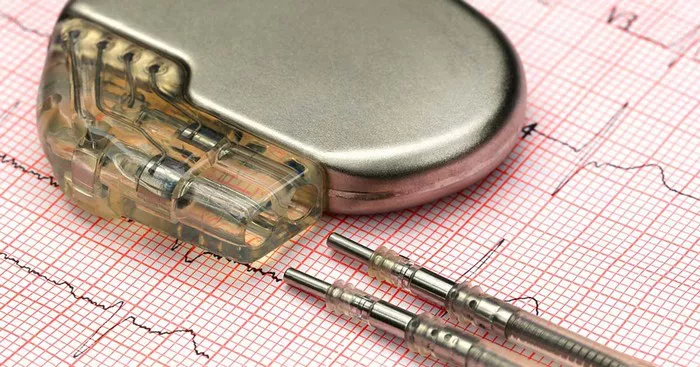Atrial fibrillation (AF) is a common cardiac arrhythmia that affects millions of people worldwide. It is characterized by irregular and often rapid heartbeats, which can lead to various complications if not managed effectively. One of the treatment options for AF is the use of pacemakers, specifically designed to regulate the heart’s rhythm and improve patient outcomes. In this article, we delve into the advanced pacemaker technologies used for atrial fibrillation, highlighting their benefits, functions, and advancements in the field of cardiology.
Understanding Atrial Fibrillation and its Challenges
Before delving into pacemaker technologies, it’s crucial to understand atrial fibrillation and the challenges it poses to patients and healthcare providers. AF disrupts the normal electrical signals in the heart’s upper chambers (atria), leading to irregular contractions and inefficient pumping of blood. This can result in symptoms such as palpitations, shortness of breath, fatigue, and in severe cases, stroke or heart failure.
Managing AF involves controlling heart rate, restoring normal rhythm (sinus rhythm), and preventing complications. While medications like antiarrhythmics are commonly used, they may not always be sufficient, especially in cases of persistent or recurrent AF. This is where pacemakers play a pivotal role in providing continuous monitoring and intervention to optimize cardiac function.
Evolution of Pacemakers in Atrial Fibrillation Management
Pacemakers have evolved significantly since their inception in the 1950s, from basic single-chamber devices to sophisticated dual-chamber and biventricular systems. For atrial fibrillation management, pacemakers with specific features and capabilities are employed to address the unique needs of patients with this condition.
1. Single-Chamber Pacemakers: These devices have one lead implanted in either the atrium or ventricle, delivering electrical impulses to regulate heart rhythm. While effective for certain patients, they may not provide optimal synchronization between atrial and ventricular contractions in AF cases.
2. Dual-Chamber Pacemakers: Dual-chamber pacemakers have leads in both the atrium and ventricle, allowing for more physiological pacing and coordination between chambers. They are beneficial for AF patients who require atrioventricular (AV) synchrony to improve cardiac output and reduce symptoms.
3. Biventricular (CRT) Pacemakers: In cases of AF with concomitant heart failure and ventricular dyssynchrony, biventricular pacemakers, also known as cardiac resynchronization therapy (CRT) devices, are utilized. These devices coordinate pacing between the atria and both ventricles, optimizing cardiac function and reducing heart failure symptoms.
Advanced Technologies in Modern Pacemakers for AF
Recent advancements in pacemaker technologies have further enhanced their efficacy and versatility in managing atrial fibrillation. These technologies include:
1. Rate-Responsive Pacing: Pacemakers with rate-responsive capabilities adjust heart rate based on physical activity, ensuring appropriate pacing during rest and exertion. This feature is beneficial for AF patients with varying activity levels.
2. Automatic Mode Switching: Some pacemakers can automatically detect AF episodes and switch to specific pacing modes optimized for AF management. This helps maintain sinus rhythm or control heart rate during AF episodes, reducing symptoms and improving quality of life.
3. Remote Monitoring and Programming: Modern pacemakers are equipped with remote monitoring capabilities, allowing healthcare providers to monitor patients’ cardiac status, adjust settings, and detect arrhythmias remotely. This facilitates proactive management and timely interventions, enhancing patient care and convenience.
4. MRI-Compatible Pacemakers: MRI compatibility is an essential feature in pacemakers, enabling patients to undergo magnetic resonance imaging (MRI) scans without significant risks or device-related issues. This expands diagnostic and treatment options for AF patients requiring MRI evaluations.
5. Leadless Pacemakers: Emerging technologies in pacemakers include leadless devices implanted directly into the heart, eliminating the need for traditional leads and reducing complications associated with lead placement. While still evolving, leadless pacemakers offer potential benefits for select AF patients.
Considerations and Future Directions
While advanced pacemakers offer promising solutions for atrial fibrillation management, several considerations and future directions merit attention:
1. Patient Selection: Tailoring pacemaker therapy to individual patient characteristics, including age, comorbidities, and AF severity, is crucial for optimal outcomes.
2. Long-Term Follow-Up: Regular monitoring and follow-up are essential to assess pacemaker function, adjust settings as needed, and address any complications or changes in patient status.
3. Integration with Other Therapies: Pacemakers may beused in conjunction with other AF treatments such as ablation, anticoagulation therapy, and lifestyle modifications for comprehensive management.
4. Research and Innovation: Ongoing research and innovation in pacemaker technologies, including artificial intelligence, sensor integration, and personalized algorithms, hold promise for further enhancing AF management and patient outcomes.
Conclusion
Advanced pacemaker technologies have revolutionized the management of atrial fibrillation, offering tailored solutions to improve cardiac rhythm control, symptom management, and overall quality of life for patients. With ongoing advancements and multidisciplinary approaches, the future of pacemaker therapy in AF remains promising, paving the way for enhanced precision, efficacy, and patient-centered care in cardiology.


